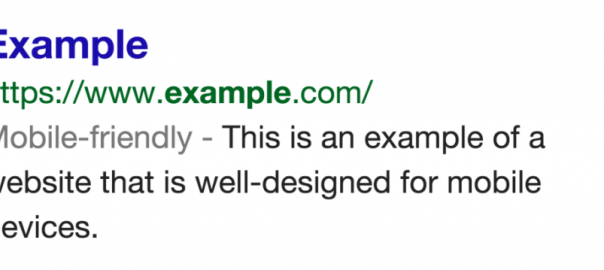Web site operators are anxiously awaiting the results of Google’s algorithm change on Tuesday, April 21st. The changes will reflect the growing use of mobile for search, and Google says it will give higher precedence in search rankings to mobile-friendly websites.

Google claims that this algorithm change will have ‘a significant impact’ on web site search rankings, even more so than earlier algorithmic adjustments via Google Panda or Google Penguin. Webmasters have had nearly two months to prepare for this change, since Google’s Feb 26 blog post which outlined what the changes would mean to mobile-friendly sites. In that post, Google’s team wrote:
“Starting April 21, we will be expanding our use of mobile-friendliness as a ranking signal. This change will affect mobile searches in all languages worldwide and will have a significant impact in our search results. Consequently, users will find it easier to get relevant, high quality search results that are optimized for their devices.”
Even before this announcement, Google started making mobile design a visible search advantage by marking sites “Mobile-friendly” in November of 2014. Many in the industry have thought this was a prelude to making mobile-friendliness a ranking factor, and the time has now come.
So what does this mean for website operators? For starters, it means your site has to be mobile friendly, appropriately designed to view in responsive forms on smartphones, tablets and other devices. To test your site, check Google’s handy guide to Getting Started for Mobile-Friendly Websites. When you’re there, you’ll find:
- tips on how to check if your site is mobile-friendly
- how to make a site mobile friendly with various vendor software tools
- resources to learn more about technical details
The Computerworld article How to prep, in 7 steps, for Google’s mobile search change suggests several ways to be ready for Tuesday’s launch with a few directions. Most obvious is to get your site optimized ASAP for mobile display and search. If your site isn’t there yet, Google’s test result will show you a few ways to get going on that effort.
Alas, some big brands may get left behind initially from the algorithm change. Business Insider reports on many global brands and government agencies whose current sites don’t pass the mobile test. These include brands like Kellogg’s UK, Danone, The Daily Mail, American Apparel, the official website for the European Union and other big sites. Without a quick move on their part, these brands may see their search listings impacted this week.
For further resources, our partners at Hubspot have put together a ‘What You Need to Know’ guide for getting your site ready for mobile.
(225)
Report Post








